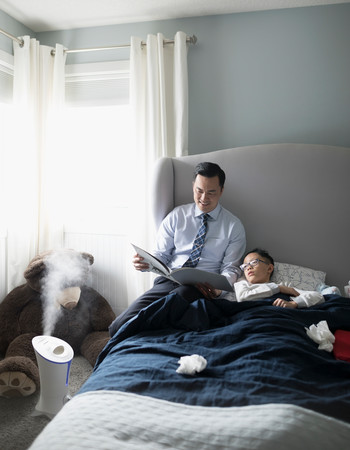




Family Health
Helping Kids With Congestion


While colds tend to occur more frequently during the cooler months, it’s not the weather that causes them. Instead, they’re caused by exposure to viruses. In colder months we're often indoors and in more crowded spaces.
Every day I see more and more children in my office with runny and stuffed-up noses – all caused by bacteria, viruses or allergies. On average, kids can develop five to 10 upper respiratory tract infections each year. And while most of the time most of these colds will improve after five to seven days, it can be tough as parents to watch our kids suffer.
So what can parents do to help their kids deal with congestion?
Treating Congestion Caused by Cold Viruses
 The American Academy of Pediatrics does not recommend the use of antihistamines and decongestants in children younger than 6 because of possible side effects. But there are a lot of other things besides medication that can help.
The American Academy of Pediatrics does not recommend the use of antihistamines and decongestants in children younger than 6 because of possible side effects. But there are a lot of other things besides medication that can help.
- Try nasal saline drops. Add two to three drops per nostril and then apply gentle suction with a bulb suction or oral suction aspirator like a NoseFrida. Nasal saline bottles work well for older kids to rinse out their noses.
- Add a little steam. Turn on a steamy shower and sit in the bathroom with your child. You can also use a cold-mist humidifier.
Avoid using nasal sprays or drops containing vasoconstrictors because of the high incidence of rebound nasal congestion after a few days of use. These medications narrow the blood vessels.
Pain and fever associated with a cold can be treated with acetaminophen or ibuprofen, but aspirin should be avoided in children because of its association with Reye syndrome.
And have you heard about zinc? Studies on the effects of zinc to reduce the duration of cold symptoms have shown conflicting results. Vitamin C also has not been proven effective.
Is It a Virus or Bacteria?
The difference between a viral infection and bacterial sinus infection is based on the severity and duration of symptoms. The color of the nasal discharge does not differentiate between a viral or bacterial infection. It's normal for the nasal discharge to change color during different stages of a cold.
When To Call Your Doctor
You may need to call your child’s pediatrician if they have nasal congestion and:
- A fever (temperature over 100.4) arising three or four days after cold symptoms begin, or lasting several days
- Persistent pressure or pain in the sinuses, over the cheekbones, or around and behind the eyes
- Recurrent or chronic symptoms
- Development of difficulty breathing
If symptoms have been present for weeks to months and seem to have a clear environmental trigger, they may be due to allergies and require antihistamines or nasal steroids. Runny nose and congestion that lasts longer than 10 days may point to a sinus infection.
More Resources
- Learn more about the differences between allergies and sinus infections.
- Need a provider for your child? Find a Methodist pediatrician or family medicine provider today.

